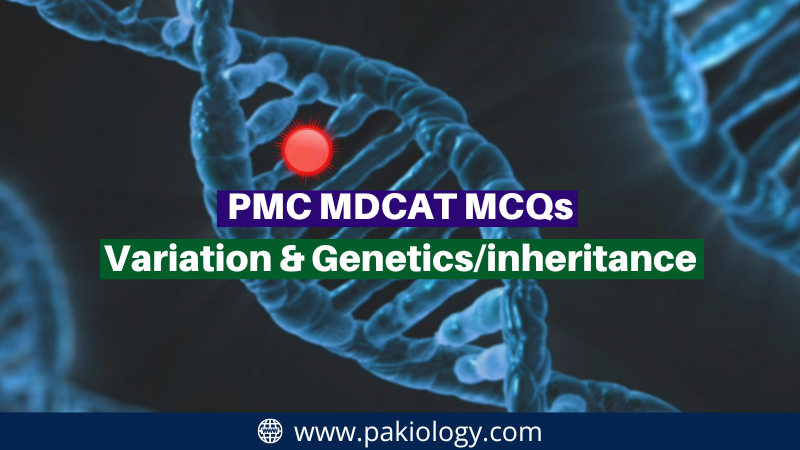Take this quick test and see how well you understand the subject of variation and genetics! There are 118 multiple-choice questions each question to be answered in 45 seconds, so you’ll need to work fast, but all of these MCQs are based on actual MDCAT tests and will help prepare you to do well when it comes time to take the exam in May. Don’t forget to check out other posts on our site if you want to learn more about medical topics on the MDCAT!
Mendelian vs. Non-Mendelian
Mendelian inheritance is what happens when a single gene on one chromosome determines the trait that is passed down. Non-Mendelian inheritance occurs when multiple genes are involved and each one contributes to the trait.
Non-Mendelian inheritance also takes into account the environment, whereas Mendelian does not. Some examples of non-Mendelian traits include skin colour, height, and blood type.
Dominant vs. Recessive Gene
It takes two dominant genes to express a trait, but only one recessive gene is needed to make it recessive. A person with two copies of the recessive gene will have the recessive trait. This is called homozygous and can be represented as RR. A person with only one copy of the dominant gene and one copy of the recessive gene will have no expression for that particular trait – this is called heterozygous and can be represented as Rr.
Multiple Alleles vs. Single Allele
The difference between multiple alleles and a single allele can be seen in the A gene. If one parent has an AA genotype and the other parent has an Aa genotype, then there is only a single allele of this gene present in their child. But if both parents have an Aa genotype, then there are two different alleles of the same gene present in their child (hence, multiple alleles).
Incomplete Dominance vs. Codominance
Incomplete dominance is a genetic phenomenon that results when neither allele of a heterozygous genotype is dominant to the other. Instead, both alleles are expressed in the phenotype, but one allele is either completely or partially dominant to the other.
Codominance, on the other hand, is when both alleles of a heterozygous genotype are equally expressed in the phenotype, and neither is dominant over the other.
Epistasis vs. Pleiotropy
Epistasis occurs when one gene influences the expression of another gene, whereas pleiotropy occurs when one gene influences more than one trait. Epistatic interactions can lead to a variety of phenotypes, depending on the genes involved. For instance, if a person has two copies of a recessive allele for blue eyes and only one copy for brown eyes, then he will have blue eyes (assuming both alleles are dominant). If he has two copies of brown eyes, then he would have brown eyes.
MCQs On Variation & Genetics/inheritance
Here are the MCQs from the PMC MDCAT on Variation & Genetics/inheritance.
- Chapter: Variation & Genetics/inheritance
- Total MCQs: 118
Time’s Up
Total Questions:
Attempt:
Correct:
Wrong:
Percentage:
YOU MIGHT LIKE
PMC MDCAT MCQs On Biodiversity (Acellular/Variety of Life)
PMC MDCAT MCQs On Biodiversity (Acellular/Variety of Life){tocify} $title={Table of Contents} In biology,...
KMU MDCAT Test 2023 PDF | Download Free
Download Today MDCAT test in Pdf For free. Get KMU MDCAT test 2023 Pdf Question paper with answer keys. KMU MDCAT test...
UHS MDCAT Past Papers Pdf 2008-2020
The University of Health Sciences (UHS) Lahore was a conducting body for the Medical and Dental College Admission Test...
MDCAT Quick Notes For PMC MDCAT 2023
The MDCAT exam, which stands for Medical and Dental Colleges Admission Test, was first introduced...



0 Comments